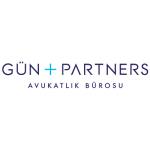Gün + Partners recently acted in a case that started as an ordinary anti-counterfeiting case, but which was quickly identified as something much bigger. When it turned out that some fake ‘fire-resistant’ glass was not fire-resistant at all, public health and safety became a major concern as well as trademark infringement.
The case began after we received a picture of some fire-resistant glass from a global manufacturer of these products. The logo trademark was simply printed on the glass and, due to several inconsistencies, it was clearly a fake product.
An investigation into the suspected company showed that the counterfeiter was installing fake products on the fire escapes of a public hospital. Following further in-depth investigation, it was determined that the fake glass had been installed in many hospitals. Some pieces of fake products were found at the counterfeiter company's premises.
Action taken
Gün + Partners filed a criminal complaint and requested a search warrant from the court to seize the products kept at the company’s premises. The Court rejected our request due to lack of evidence, and the prosecutor issued a non-prosecution decision.
We then proceeded with conducting a civil discovery of evidence with the local Civil IP Court and managed to identify and seize the fake products through a civil preliminary injunction decision.
Following the submission of a favorable expert report to the civil discovery of the evidence file, we filed a fresh criminal complaint and concurrently informed the Ministry of Health (MoH), as well as the management of the relevant hospitals and some administrative bodies, of the threat on public health and safety.
The MoH initiated an investigation covering all hospitals throughout Turkey and it turned out that there were several other hospitals in which fake products were being used. This piece of information led to official fire-resistance tests being conducted by Turkish Standards Institute Laboratories.
The tests made it clear that the products were made of ordinary glass and were resistant to fire for only three minutes, although it was supposed to be resistant for 120 minutes to give enough time to rescue patients in a critical condition. The MoH has taken some official steps and all relevant hospitals took actions to have the fake products replaced with fire-resistant ones.
Consequences and next steps
At the end of the preparatory investigation, the prosecutor indicted the infringer based on trademark infringement. As we managed to bring concrete pieces of evidence, the accused also confessed that he was guilty and added that he is ready to replace all fake products with fire-resistant products.
The Criminal IP Court found the infringer guilty and, considering the public health and safety risks he created, sentenced the infringer to imprisonment without suspending the verdict, unlike the majority of anti-counterfeiting cases tried in the country.
The accused filed an appeal before the Regional Court of Appeals. However, the Court of Appeals not only upheld the local IP Court’s decision but also decided to inform the Public Prosecutors’ Office to instigate a separate investigation based on aggravated fraud, because the fake products were sold to the state through public tenders.
In this matter, not only protected the client’s IP rights but also helped to put an end to a serious public health and safety threat. Our work enabled the government to collect losses from, and to punish, an infringer who also committed aggravated fraud against the state.
This is an important example of how additional grounds – such as public health and safety-related provisions – can be leveraged in matters that appear to be straightforward IP infringement or counterfeiting issues.
The case also shows that brand owners should take everything into consideration when taking action against counterfeiters, and seek tailored action plans for the best success in their brand protection efforts.
Barış Kalaycı
Partner, Gün + Partners
Direnç Bada
Senior Associate, Gün + Partners










